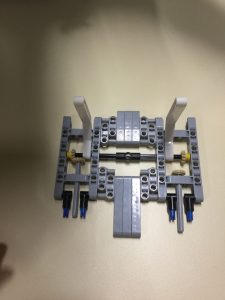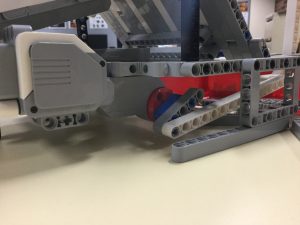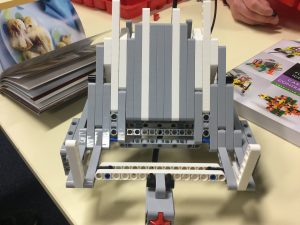
The book holder effectively upgrades on the inconvenience of holding a book, allowing for automation in a previously unexplored area. This book stand allows readers to take drinks, read the page selected and to take notes. It does this through a clamp system controlled via two motors. The clamps are adjustable, and allow for minimum obscurity of the words on the pages. It uses the back-board to hold the book at a thirty five degree angle, allowing for reading while sitting or standing.
We found inspiration from book stands on Amazon, allowing us to create an effective model prior to programming.
Reasoning
Large and heavy books, such as many maths or science textbooks will close on themselves, and require constant attention from the reader to keep the books open whilst taking notes, or a drink. The act of a book closing, despite the book, is quite an inconvenience – One we wished to eliminate. It is particularly useful for cooking, as it allows for a stand and keeps the book open on the recipe without accidentally overcooking something whilst scrambling to find how long it’s meant to be cooking for.
Potential Functions
- Must allow for usability – Cannot get in the way of users.
- Must hold the pages down without damaging the book. (Too much pressure.)
- Must allow for other tasks to be performed whist the book is being held by the stand.
Ice-Boxed Concepts
We attempted to create a page-turning system, through use of wheels. This seemed to only be able to turn no pages, or too many, as well as getting in the way of the reader. It also appeared it would damage the pages if too much pressure was applied.

We also attempted to create an over-page clamp. Both sides were unable to exist at the same time, due to the difference in motor types on the top and bottom. Both of the top sides were out of sync, and subsequently there was nothing we could change in the program to improve such a fault.
Team members – Andrew, Joe, Bill, Will

